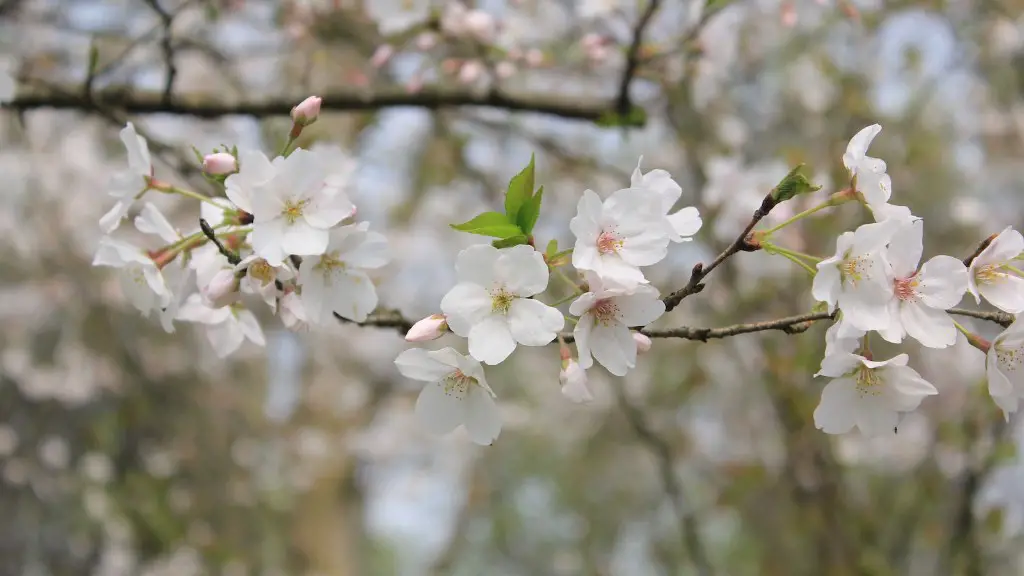When caring for a lemon tree, pruning is an important factor. Pruning helps to control the size of the tree and encourages its growth of healthy new branches, as well as providing light and ventilation to the centre of the tree. This article will demonstrate how to prune a lemon tree safely and meaningfully.
The first step in pruning a lemon tree is to inspect it from the top down. Look for branches that are leaning away from the centre of the tree, or those with heavy growth that may be blocking the light from other parts. It is important to identify any dead, damaged, or otherwise unhealthy branches, as these will need to be removed first.
Next, use a pair of sharp pruning shears to cut away any unhealthy branches that need to be removed. Be sure to cut back to a healthy bud of the tree, so that the wound will heal correctly. When cutting back, always angle the cut away from the bud to help ensure that it will heal properly.
Once the unhealthy branches have been removed, the next step is to start thinning out the canopy of the tree. In other words, this means cutting away any branches that are growing too thick and blocking the light to the centre of the tree. Again, make sure to cut back to a healthy bud so that the tree can heal properly after the pruning.
The final step in pruning a lemon tree is to shape the canopy by selectively removing branches that are growing too long or too wide. This will help to give the tree a pleasing, balanced appearance. Finally, remember to clean up the area around the lemon tree after pruning, as this helps discourage pests and diseases from taking hold.
When is the best time to prune a lemon tree?
The best time to prune a lemon tree is in the early spring, before the tree starts to flower and develop fruit. Pruning at this time of year allows for time for any wounds to heal properly before the onset of summer. If pruning does have to occur during the summer months, be sure to provide adequate shade to the cuts, as this will help to prevent sunburn and dehydration.
What tools are needed to prune a lemon tree?
When pruning a lemon tree it is important to use the right tools. Standard garden clippers and pruning shears are the ideal tools to use, as they are precise and sharp enough to make clean, accurate cuts. It is important to ensure that the blades are kept sharp as this will reduce the chance of bruising or splitting the stems of the tree.
How do I care for a pruned lemon tree?
Once the lemon tree has been pruned, it is important to take good care of the tree in order to ensure healthy growth. It is important to irrigate the tree properly, especially after pruning, to ensure that the wounds begin to heal and ensure that the tree’s roots can access water and nutrients. Additionally, it is important to apply a layer of mulch to conserve water and protect the roots of the tree.
What health problems can arise due to improper pruning?
Incorrect pruning can lead to a number of health problems for the lemon tree. Pruning too much can cause the tree to become stressed and weak, as well as increase the risk of infection from harmful fungi and diseases. Additionally, incorrect pruning can lead to the development of open wounds on the tree which can be difficult to heal and may provide entry points for pests and bacteria.
What is the best method for pruning a young lemon tree?
When pruning a young lemon tree, it is important to take a more gentle approach. It is important to look out for any dead or damaged branches first, and to remove only those that need to. With young trees, it is also important to try and maintain an open, balanced canopy so that there is adequate light and air circulation throughout the tree. It is recommended not to prune more than a third of the new growth at a time.
What mistakes should be avoided when pruning a lemon tree?
When pruning a lemon tree there are a few mistakes that should be avoided. First, it is important to avoid cutting too close to the bud of the tree as this will reduce the strength of the branch and may also cause the bark to be damaged. Additionally, it is important to avoid pruning too harshly, meaning cutting away more than a third of the new growth at one time. Finally, when removing dead or damaged branches, it is important to avoid leaving any stubs, as these can be entry points for pests and diseases.


